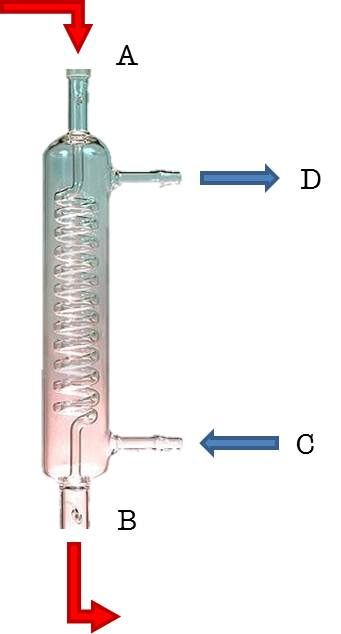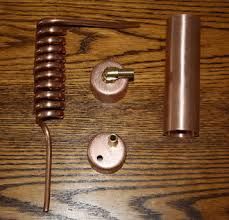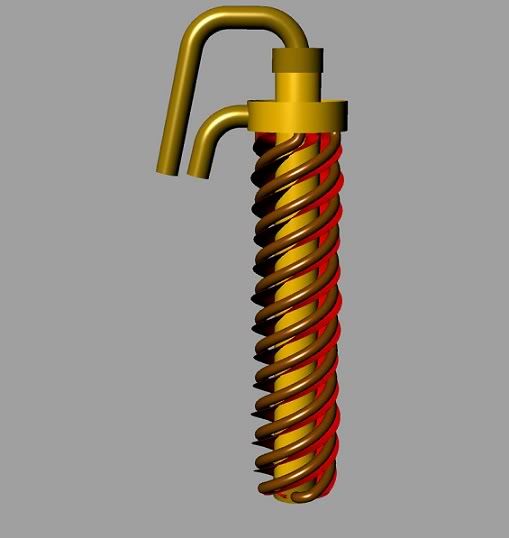EGSHQ
Active Member
Has anyone had experience using a Graham Condenser as a Wort Chiller in SS or copper?
Displayed below in glass to make it easier to explain; wort goes into coil at "A" on the top and runs down though the coil and out the bottom at "B". The cold water flow goes in the bottom at "C" and out the top at "D" thus, creating the counter flow for good heat exchange.
I made a prototype out of copper and it worked quite well. Using water only, the temperature went from 170ºF to 70ºF in about 15 minutes in a closed system set up. While disconnected, I filled the condenser halfway up with water and placed it on the left side (as viewing this picture) in the freezer overnight. The placement was to keep the orifices from being completely blocked by ice and therefore, blocking the flow of water.
Comments, please...

Displayed below in glass to make it easier to explain; wort goes into coil at "A" on the top and runs down though the coil and out the bottom at "B". The cold water flow goes in the bottom at "C" and out the top at "D" thus, creating the counter flow for good heat exchange.
I made a prototype out of copper and it worked quite well. Using water only, the temperature went from 170ºF to 70ºF in about 15 minutes in a closed system set up. While disconnected, I filled the condenser halfway up with water and placed it on the left side (as viewing this picture) in the freezer overnight. The placement was to keep the orifices from being completely blocked by ice and therefore, blocking the flow of water.
Comments, please...







